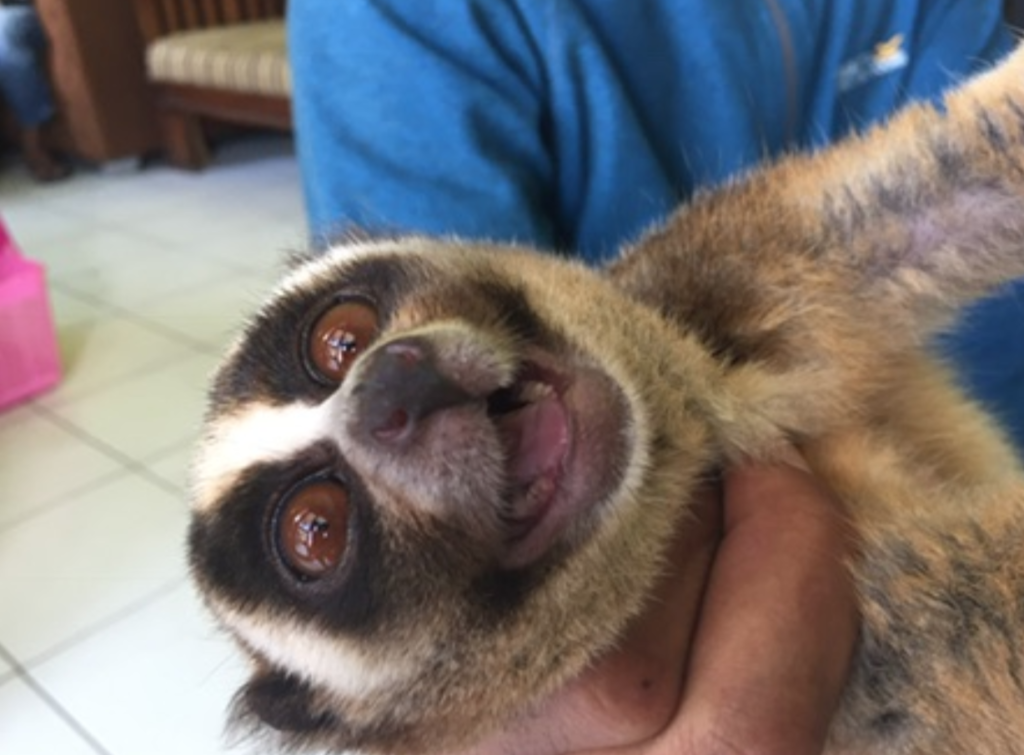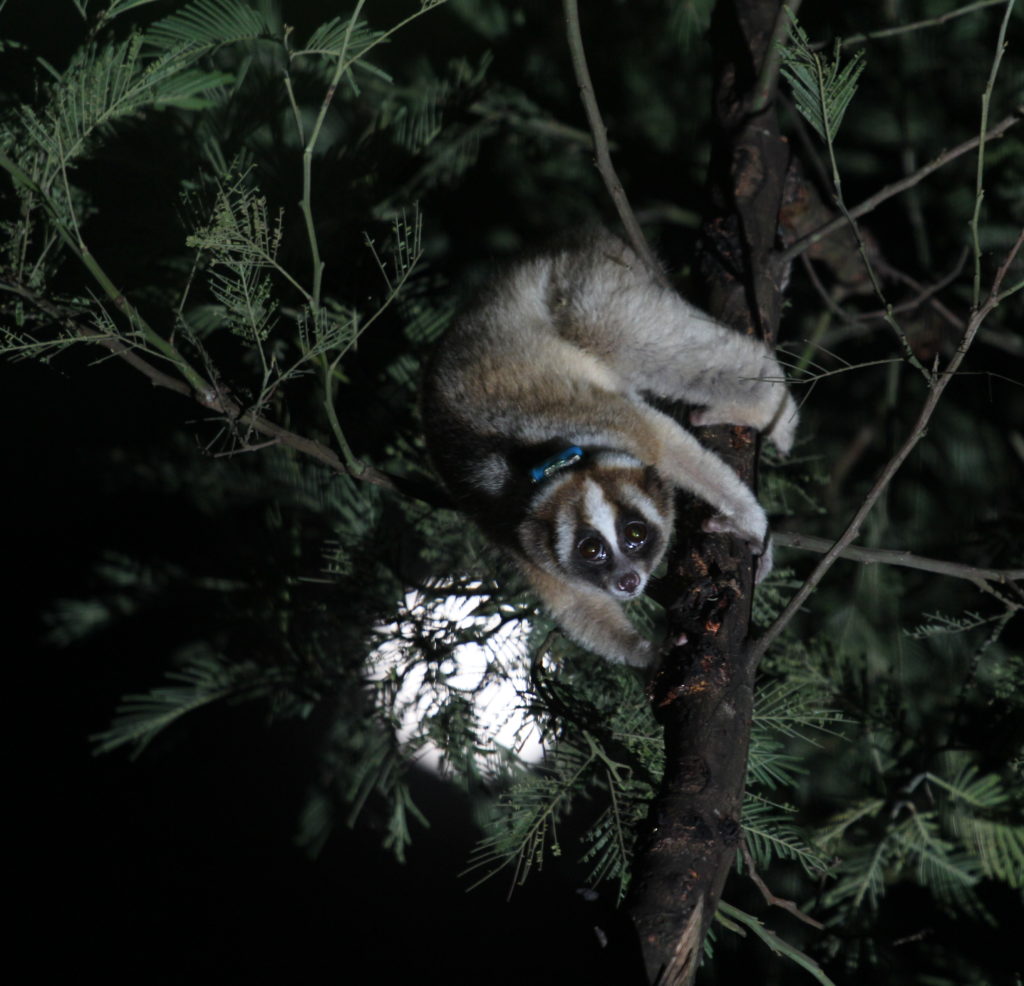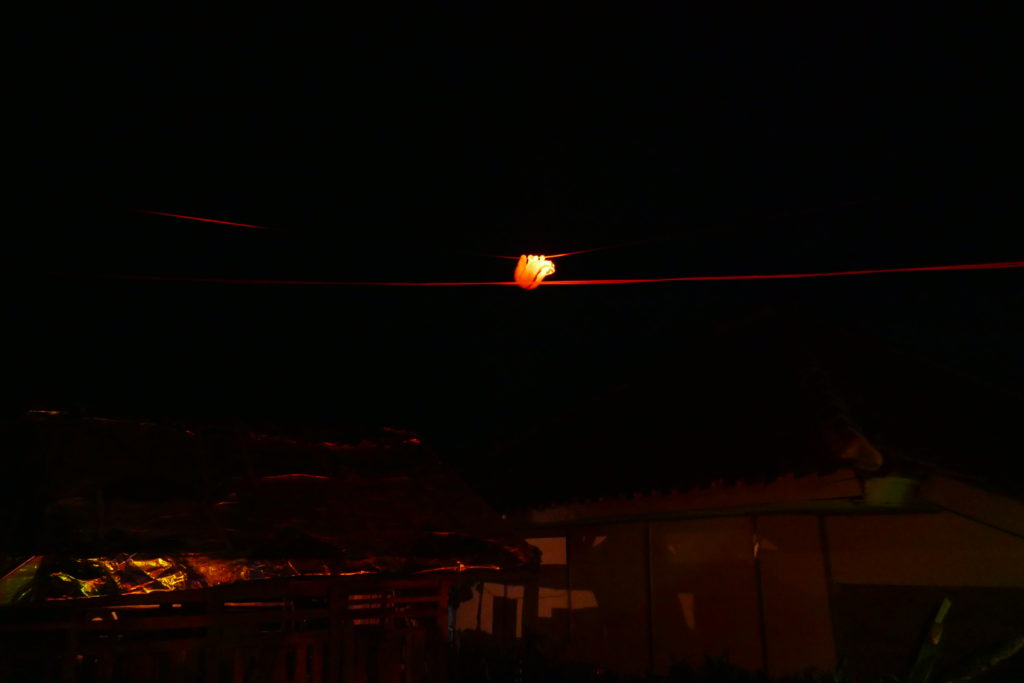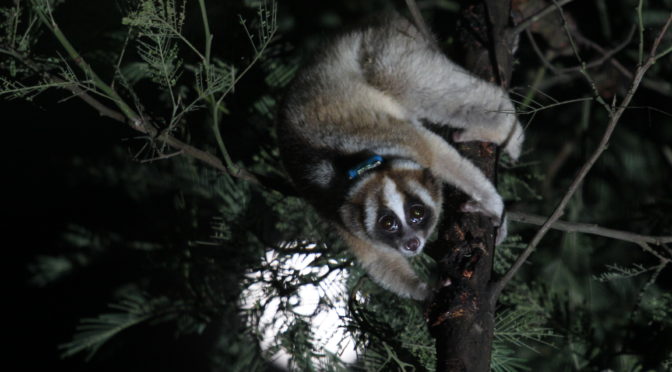The Little Fireface Project researches wild Javan slow lorises, that is our official mission and purpose. But as the only slow loris project in the immediate area of Cipaganti, West Java, we are often brought slow lorises in need that have been caught or found by villagers. Although we are a research programme, and not a rescue centre, we do not turn these animals away. We want to help every loris we encounter, wild or otherwise.

Slow Lorises In Need
We encounter slow lorises from a variety of health conditions and backgrounds. If it is a medical emergency, we rush the animal to one of the animal rescue centers in West Java, such as Cikananga, IAR, or Aspinall. Medical emergencies usually arise when unfortunate lorises wander into human-populated areas. Power lines in particular, as they create bridges from one place to another that a loris on its way through town might find convenient to use, pose a great danger. Lorises can be seriously injured or killed by the electric currents running through these wires. Concerned citizens may encounter a loris in such a situation, and catch the loris themselves to bring to us, or give us a call to tell us where the loris is.
We also encounter escaped members of the pet trade. Even though we strive to educate people about the importance of keeping slow lorises wild, there are still those in the larger area of Garut who buy and own slow lorises as pets. Sometimes, though, these pets escape, as did the most recent loris we were brought. This loris was found walking along the street in a busy city area. Luckily, though, a compassionate citizen carefully captured her and brought her to us. Upon first look, it was sadly obvious that she had been a member of the pet trade. All of her teeth had been removed or filed down. This is a horrible and common practice for pet traders wanting to protect themselves from the venomous and painful slow loris bite.
Importance of Teeth
The sharp teeth of slow lorises are important tools for their lives in the wild. Along with venom, teeth provide the main defense mechanism against predators and other slow lorises. Teeth are also important for, obviously, eating! A major part of the Javan slow loris diet is tree gum. It offers important vitamins and is packed with energy. In order to access gum, a loris must use its strong teeth to gouge through the outer layer of tree bark.

With no teeth, a loris will be unable to properly forage for food, which can cause serious health problems. This means that sadly, the loris who was brought to us will never be able to return to the wild. Thankfully, though, she will now happily live out the rest of her days with our good friends at Cikananga Wildlife Center, who have generously offered to give her a wonderful home in their facility.
Captured Slow Lorises
Most often, though, the lorises we are brought do not have any medical problems. Unfortunately, people sometimes just catch a slow loris if they are able to. Especially in the agroforest habitats around the Garut area, slow lorises often come close to or walk along the ground in farmlands, and even enter into rural villages. If someone comes across a loris in such a place, they may think that something is wrong with it, or become scared (there is a local myth that slow lorises can bring bad luck to farms if their blood touches the ground). Therefore, we are sometimes brought completely healthy wild lorises who just had the misfortune of being found and captured in the wrong place.

Whenever this happens, we take immediate action to find out exactly when and where the loris was found. We also do a quick health check to make sure everything looks okay. If the loris is healthy, we bring it back to the area in which it was found, and release it straight away. If the loris was found near a village, we take it further into the forest. We must try to locate the place the loris came from, as homeranges are extremely important to their social structures. If we randomly place a new loris in someone else’s homerange, fighting over habitat-use will ensue. It is also vital that we release the loris as quickly as possible. The longer it is in human captivity, the more stress and disturbance it will feel.
Working with BBKSDA
The Javan sow loris is a protected species in Indonesia. This is a great thing for the species. This also means that we cannot transport and release slow lorises as we please! We have to follow the correct legal procedures. This means working with the local conservation and animal protection authority, Balai Besar Konservasi Sumber Daya Alam (BBKSDA). Whenever we are informed of or brought a slow loris, our first call is to the local BKSDA office. They will give us their permission and help to transport the loris to a rescue facility, bring the loris to them for temporary housing or, release the loris back into the forest where it was found.
Building connections and making sure all proper procedures are followed is vital for any organization to function properly. We are very thankful for the support and advice that BKSDA Jabar has given us. We are also becoming more involved in the welfare of the animals BKSDA has in temporary housing. As a former zookeeper, I enjoy visiting the animals and bringing fun food and enrichment items to share. This is also a great way for us to keep communicating with the BKSDA staff, and forge a stronger relationship. ELLA BROWN



